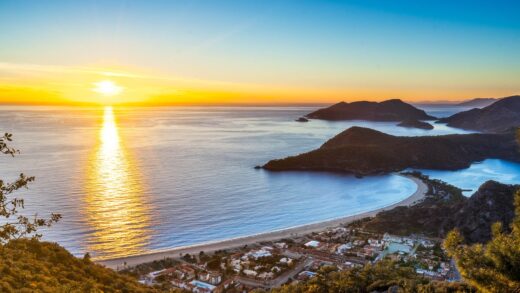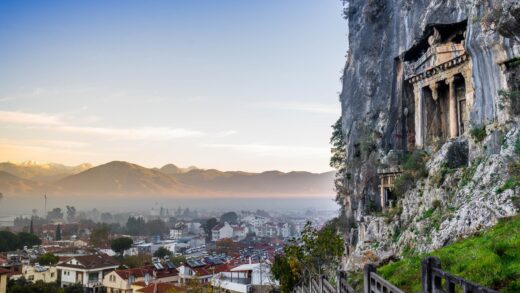The story (in Chinese) was first published in Issue 10/2021 of Lonely Planet China magazine.
This English version was translated from the Chinese original with DeepL, with the manual correction of some obvious mistranslations.. I apologize for any mistakes made by this AI translation tool.
The ancient city of Patara, Lycia, is located on the sea, far from the road and not directly accessible by bus, so I had to charter a bus from the roadside town of Yeşilköy. Of all the drivers at the station, Ali spoke the best English, and he managed to win me over.
“Patara …… beach?” When I heard I was going to Patara, he didn’t even think twice before deciding that the destination was the beach of the same name, and even confirmed it with me by doing a perfect imitation of swimming and sunbathing. The beach is located next to the old city, 18 kilometers long, with clear water and sand, and is always crowded with people in summer, and has even been selected as the “most beautiful beach in the world”. When it became clear that I was going to the old city, he didn’t say anything, just gave a hint and set off.
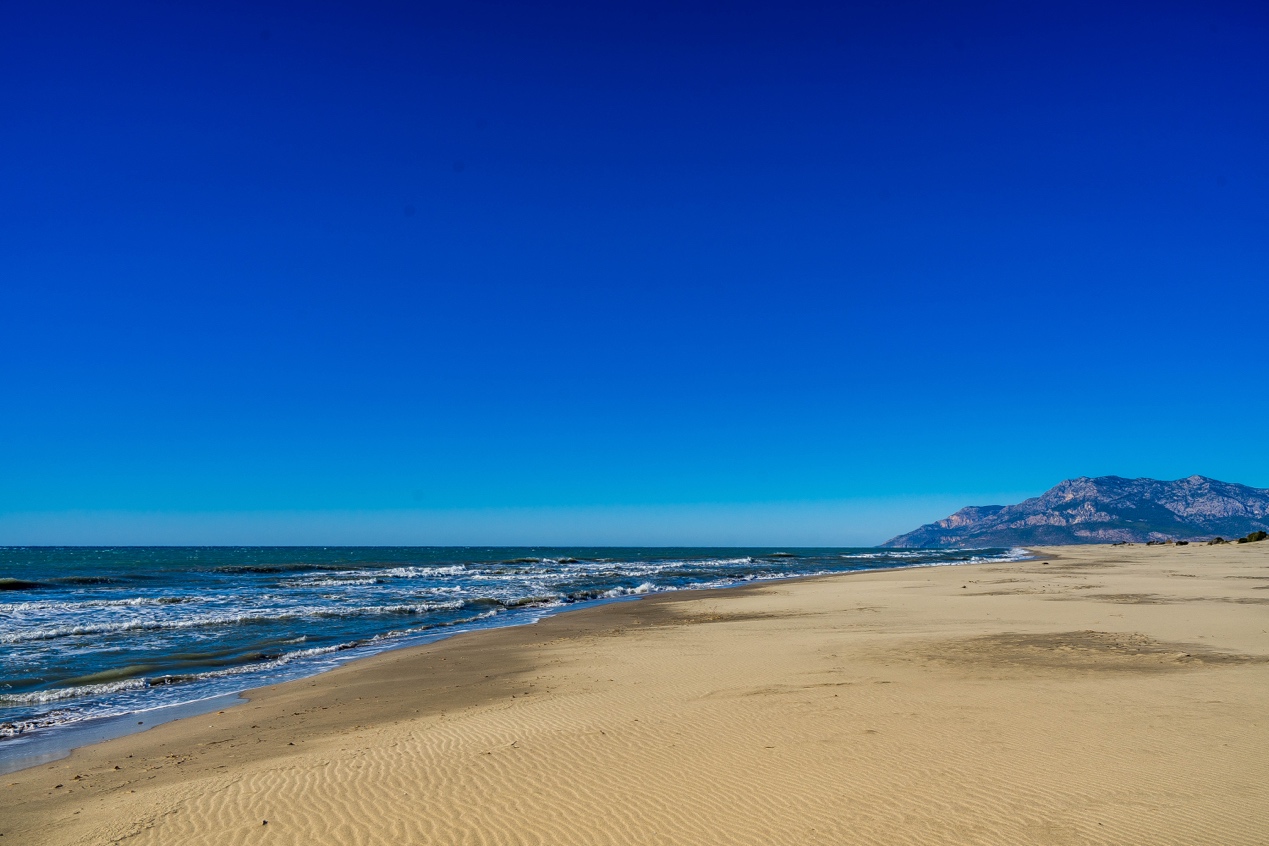
Halfway through the walk, he suddenly opened up, ‘Uh, no offense …… but I’d really like to know why you were there, to see the pile of rocks?”
“Yes, I just wanted to check it out.”
Haruki Murakami once had an eloquent answer to such questions, “To want to see that place with your own eyes, to inhale the air there with your own nose and mouth, to stand on that ground with your own legs, to touch something there with your own hands.” For me, there is no better reason to visit the ancient city of Patara.
The influence of the Lycian civilization reached its peak in 168 B.C. when 23 city-states united to form the “Lycian Commonwealth”. They established the world’s first known representative assembly using the “proportional representation” system, which met in a semi-circular chamber in the ancient city of Patara today. This structure, similar to that of many present-day parliaments, is not a mere coincidence – the federal documents left by the drafters of the 18th-century U.S. Constitution explicitly mention being inspired by the “Lycian Parliament”. At the same time, Patara also served as Lycia’s main port and was an important part of the vast maritime civilization that surrounded the Mediterranean – the remains of one of the world’s earliest surviving lighthouses still stand outside the city.
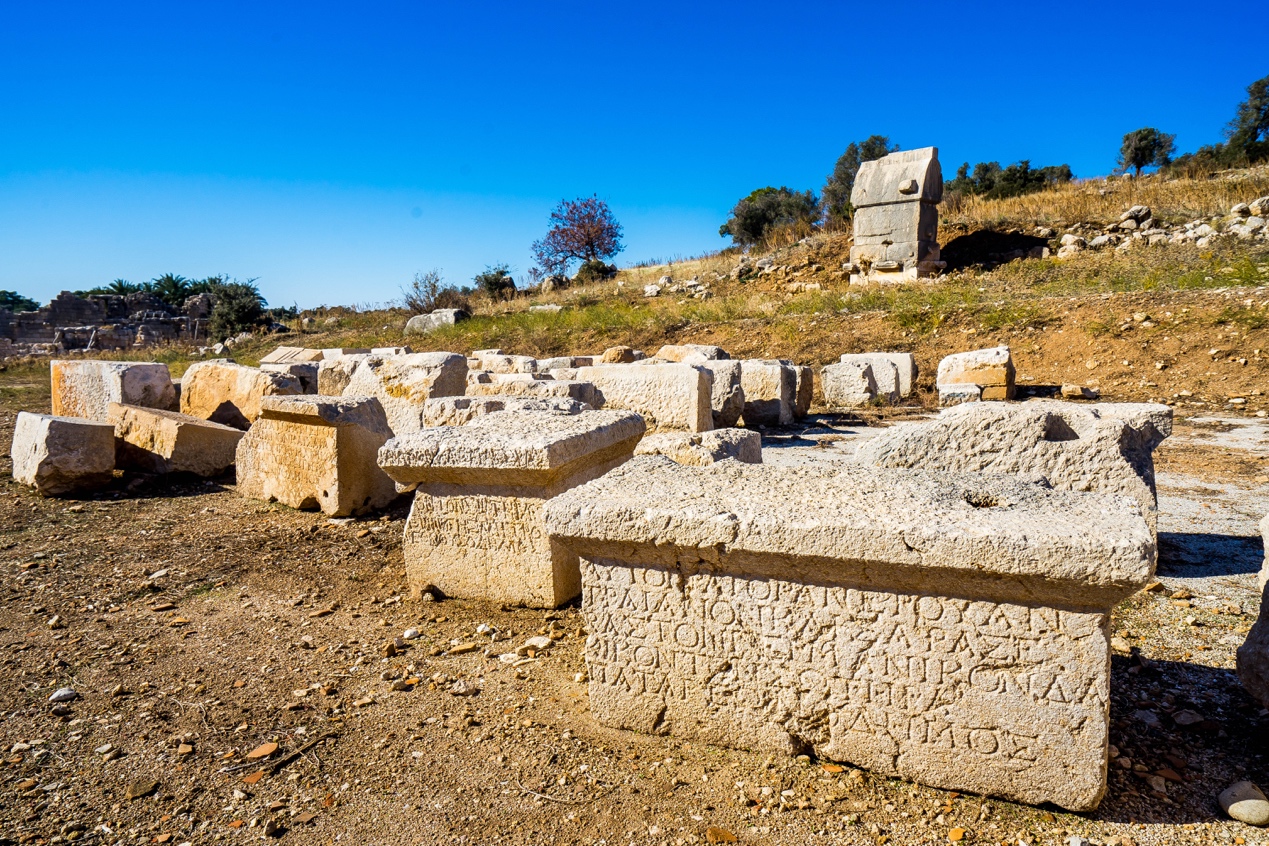
The car stopped in front of a building shaped like a triumphal arch, which was once the city gate of Patara. Unlike the subtlety and intricacy of Lycia’s architecture (inherited from ancient Greece), the gate is 19 meters wide and 10 meters high, and its massive size and bold lines show a clear Roman identity – it is proven that the gate was built in the first century AD, and the prominent pedestal once held a statue of the then Roman emperor Turazen and his wife. Yet Lycia at that time, despite being under ancient Roman rule, remained a Lycian city, and the citizens proudly inscribed their name on the top of the gates – “the metropolis of the Lycian nation, which the people of Patara built”.
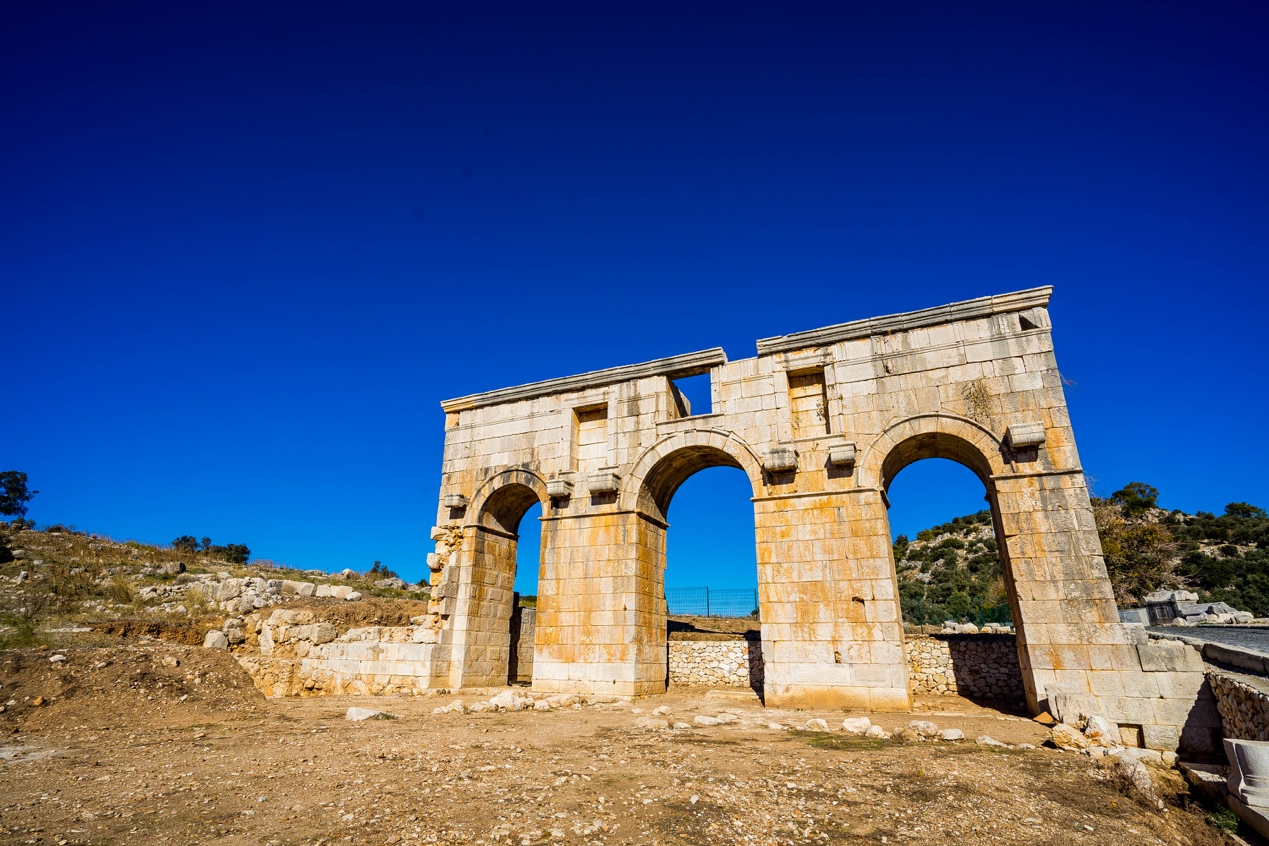
This is the only remaining fountain gate in the world – a fresh water source from the adjacent mountainous area is gravitated by gravity from an elevated aqueduct to the gate, where it eventually pours down through the opening at the top of the gate with great force into the pool in front of it. I walked over to the hexagonal pool, which is still intact, nearly 10 meters away from the gate. What a magnificent sight it must have been, that “water dragon” that once gushed down.
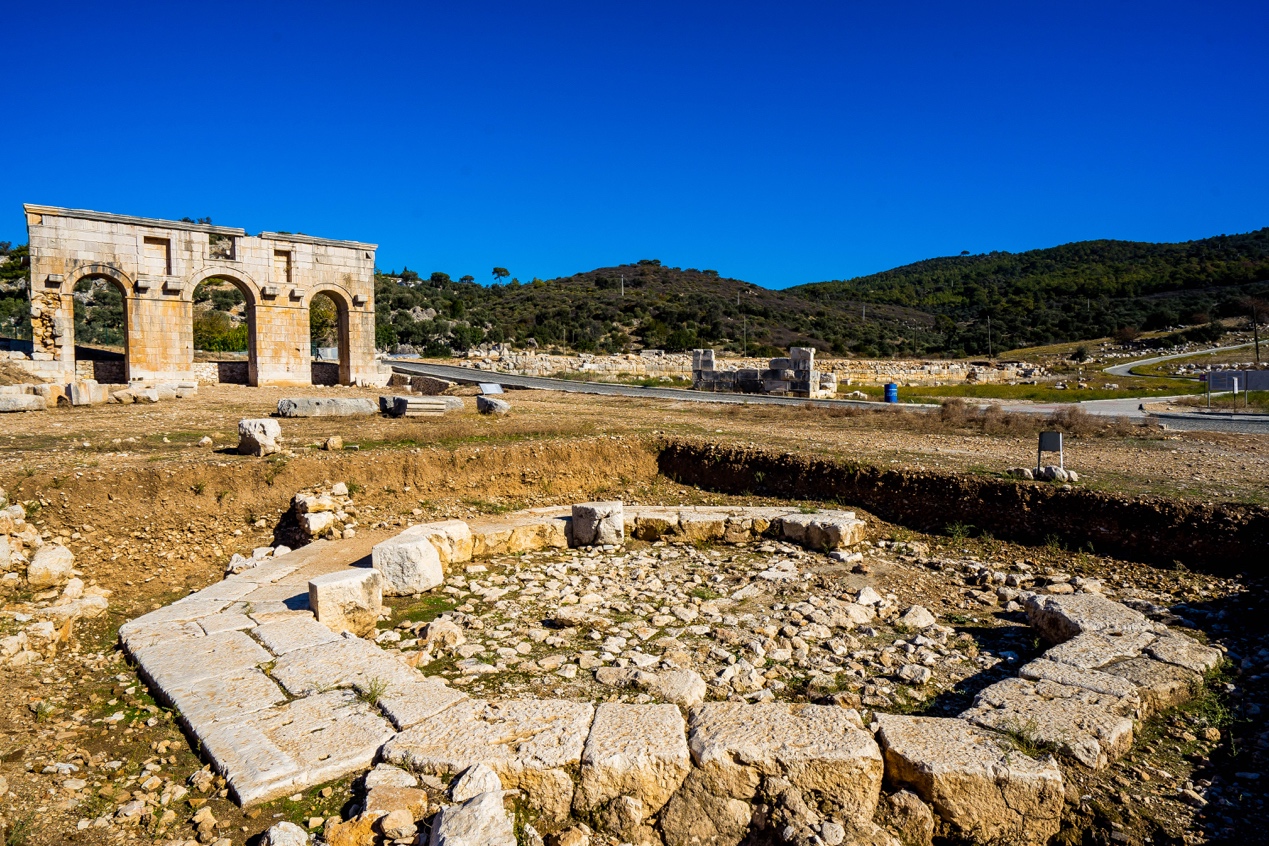
The constant flow of running water not only nourishes the inhabitants of Patara, but also keeps the huge Roman baths next to it running. The cold water baths in the centre of the baths are still intact and seem to be ready for use as soon as they are refilled. The steam-heated passages underneath the warm water baths to the side are equally visible. I can only imagine how many sailors returning from their voyages have enjoyed the long-awaited relaxation and enjoyment of this “harbour bath”.
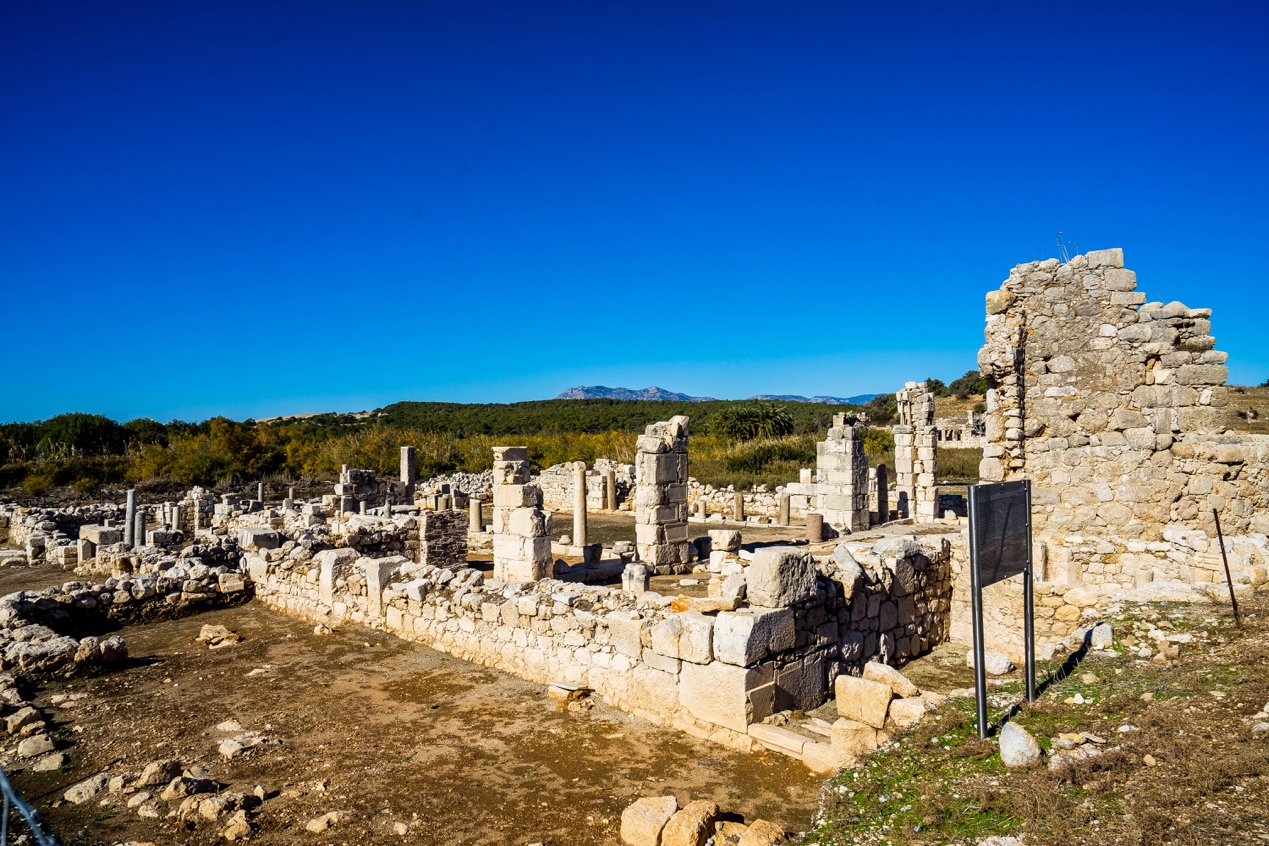
Stepping into the city is like stepping into a time warp. The 12-meter wide stone colonnade street stretches from the front of the baths, which was once the main road of the city and a necessary route for goods to and from the port. The road was once lined with shops, but today only the few restored houses and the remaining Greek “Ionic” capitals at the top of the colonnade remind us of the prosperity of the past.
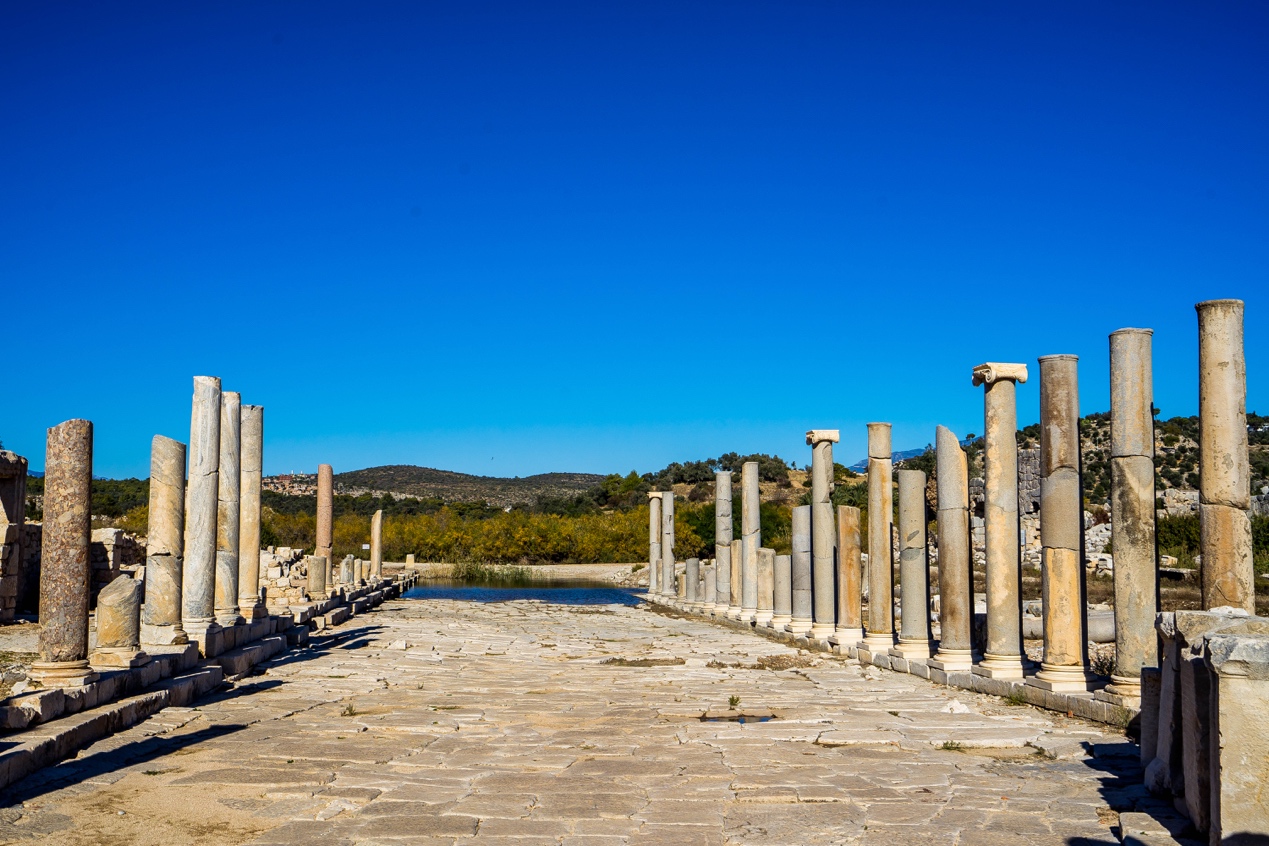
As part of the Pan-Hellenic civilization, Lycia was also heavily influenced by Greek culture. The ancient Greeks believed that this warm climate was the place where Apollo, the sun god, spent his winters. The oracle in the temple of Apollo at Patara was said to be as sacred as the ancient Greeks’ “center of the world”, Delphi. Although archaeologists have never found the temple, a giant bust of Apollo dug into the hillside outside the city gives confidence that the temple must have stood there.

At the end of the colonnaded street is the former heart of the city: the amphitheatre. The grandstand, which could seat up to 5,000 spectators, was cleverly built on a hill, demonstrating the peculiar habits of the ancient Greeks (and Lycians), while the wall that still partially survives, separating the auditorium from the stage, hints at the fierce Roman gladiators who fought against wild animals here.
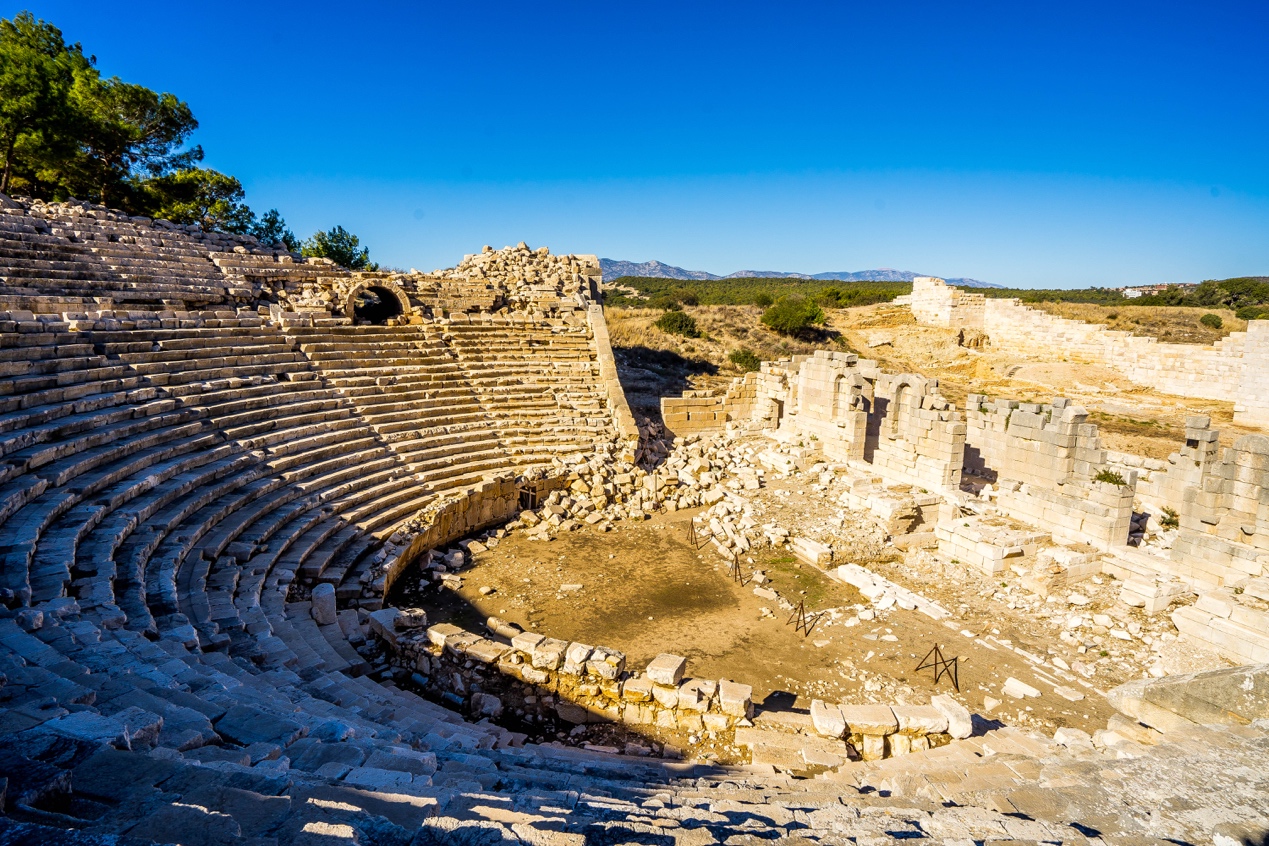
The Council Chamber, a short distance away, was much smaller than the theatre serving the common people, but also much more elaborate: obviously polished marble seats, still shining after 2,000 years, would have been the most prestigious seats in those days. 23 city-states were represented, each with its own interests, and every time a meeting took place, one could imagine the fierce debates in the room. Now, however, as one of the not-so-famous ancient ruins in Turkey, this place is empty except for me. Sitting in the empty and silent meeting room, I could even hear the seagulls chirping on the distant sea.
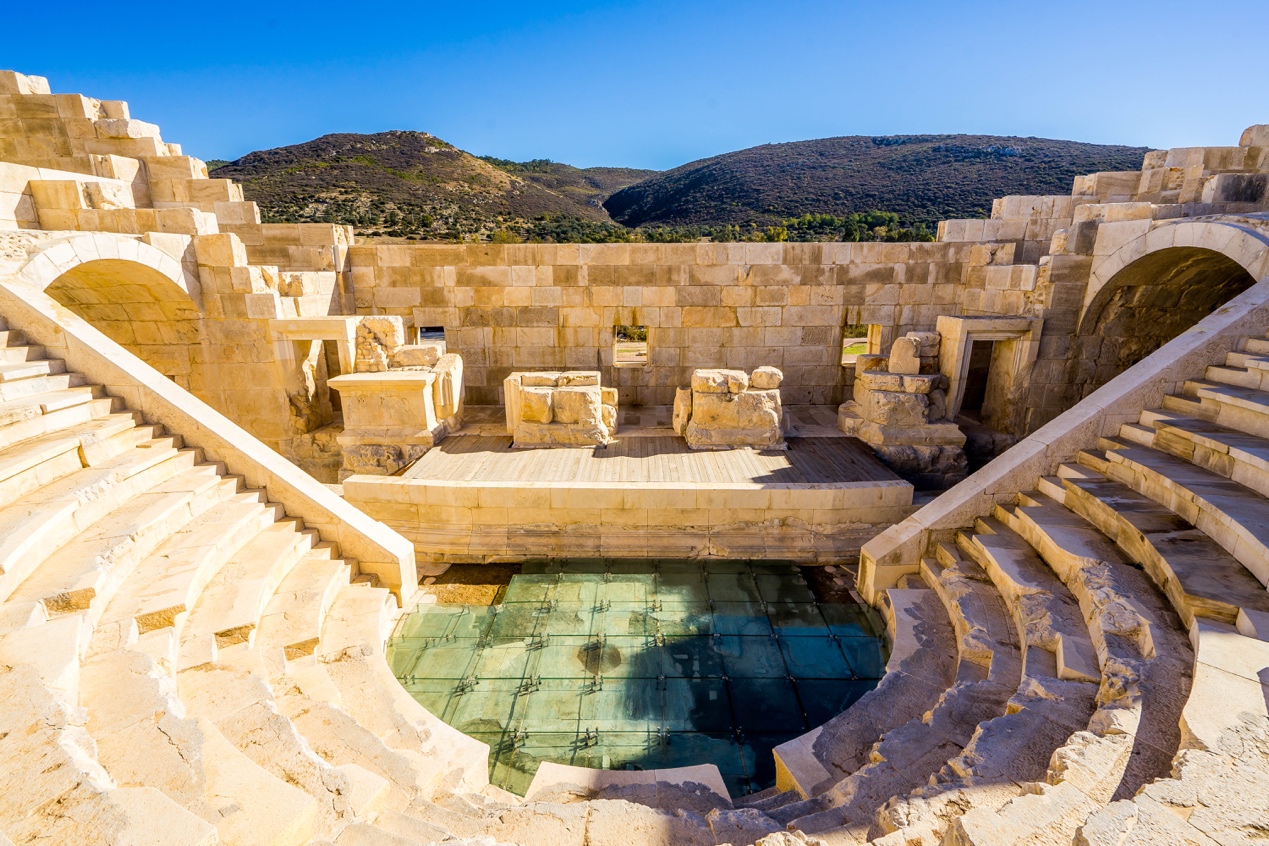
In 42 BC, the Lycians were besieged by the unrelenting army of Brutus, who had assassinated Caesar, for supporting him in the Roman civil war and refusing to pay tribute to him, and many of the Lycians who refused to surrender are said to have chosen to commit mass suicide. Since then, the Lycrian League, which had lasted for over 100 years, officially came to an end, and the Lycrians, a unique civilization in the Mediterranean, went on a long path of decline.
The city of Patara, however, continued to exist for a short time as an important port on the Mediterranean. The marble base of the lighthouse outside the city, built in 60 AD and said to be the earliest in the world, is still intact. However, the bay in front of the lighthouse, where the tides should have been high, has been reduced to a shallow pool of water by the natural silting up of the Port of Patara, a true reflection of the “changes in the sea”. From where the lighthouse stands today, one must stand on tiptoe to see through the dense undergrowth and mosquito-infested mud to the shoreline, which is hundreds of meters away.
As for the once Greco-Roman polytheistic beliefs of the Lycians, they were gradually replaced by the Christianity that came from the east since the 2nd century. In 270 A.D., a baby named Nicholas was born in Patara. To most of the world, he had a more familiar name – Santa Claus.
Many children around the world may look forward to the arrival of Santa Claus today, but his birthplace, Turkey, where Islam is now practiced almost universally, does not seem to be. Christianity’s millennial influence here died overnight after the population exchange of the early 20th century, when Greek Christians left the Anatolian coast where they had lived for generations. Not too far from Patara, Demre (the ancient name for Myra) is where Nicholas spent most of his life. The ruins of a church (where St. Nicholas is allegedly buried) are now open as the “Santa Claus Museum” and are the only place in the area where he is remembered. Unfortunately, the remains in the sarcophagus were stolen by Italian merchants in 1087.
I couldn’t even find anything related to St. Nicholas in the official presentation board of Patala. Asking my fellow traveler Ali, he was even more surprised than I was: “What? Santa Claus, you mean the bearded guy in the red suit, he was born here?” Had to run to the ticket booth and ask the doorman. “Do you know St. Nicholas?” The other guy shook his head blankly. “What about Santa Claus (Santa Claus)?” He finally caught on and nodded, “Yes, yes, Santa Claus, born here.” But when I asked more, he didn’t know all about it, and I just left unhappy.
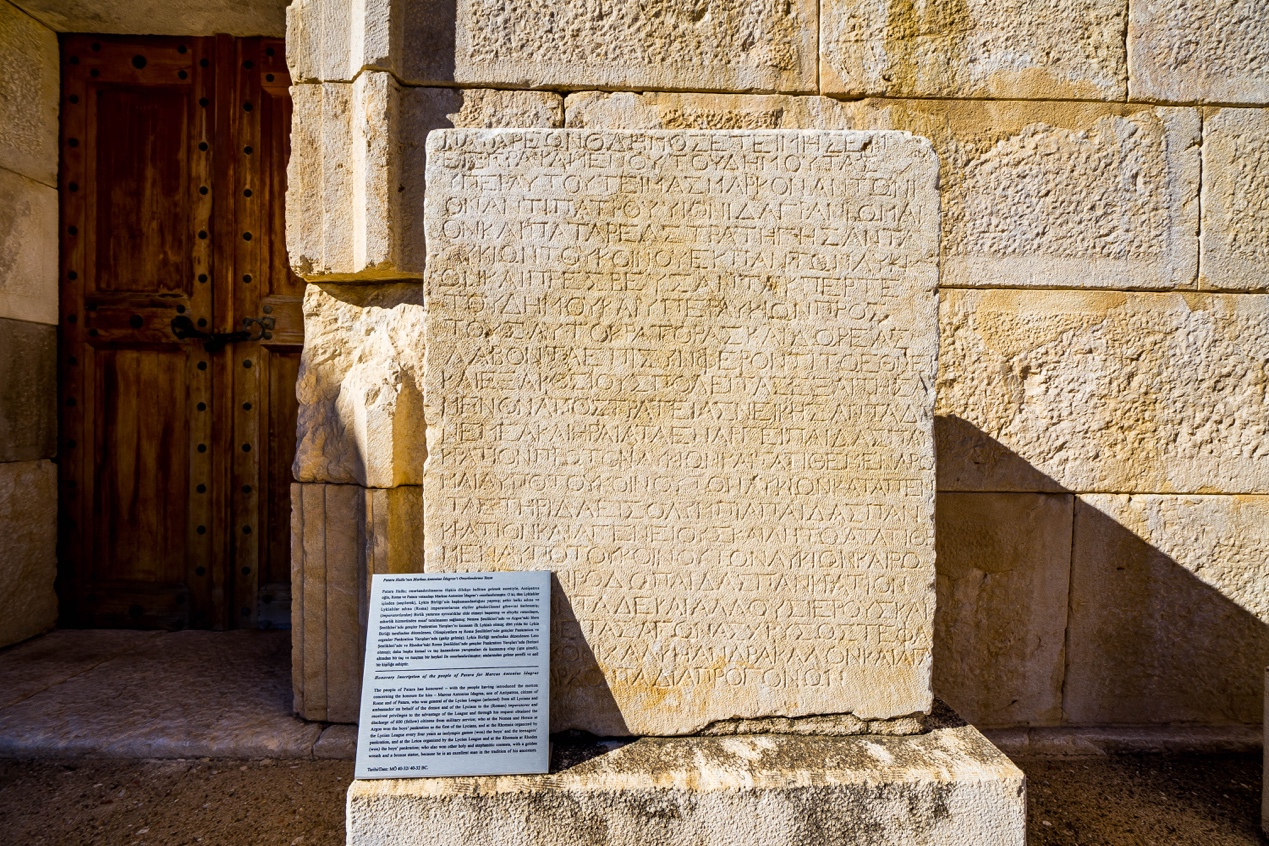
Just then, the mellifluous muezzin calling Muslims to worship at the mosque in the nearby village of Glamish sounded just then. I turned around and, not surprisingly, saw the janitor’s uncle from earlier pulling his worship rug from the corner and kowtowing respectfully in the direction of Mecca.
I jokingly asked Ali, “Why don’t you worship?” He looked scornful, “I don’t have the habit, only the old guys still do, I guess.” With that, he went so far as to pull a drained beer can out of the car door compartment and show it to me (I could only pray, sitting in the car at the moment, that it wasn’t something he had just drunk). The Mediterranean coast is indeed one of the most open areas of Turkey today, and while many people in the interior still stick to the five daily services, many young people here have made bar-hopping the new fashion.
“So …… do you like it here?” Ali asked me.
“Sure. Don’t you like it? It’s all a legacy from your ancestors, and you should be proud of it.”
“No. It was the Greeks, the Romans, and what you call the …… Lycians. But we Turks defeated them.” Ali did look proud, but not because of the splendid Lycian civilization, but because “the Turks defeated them.”
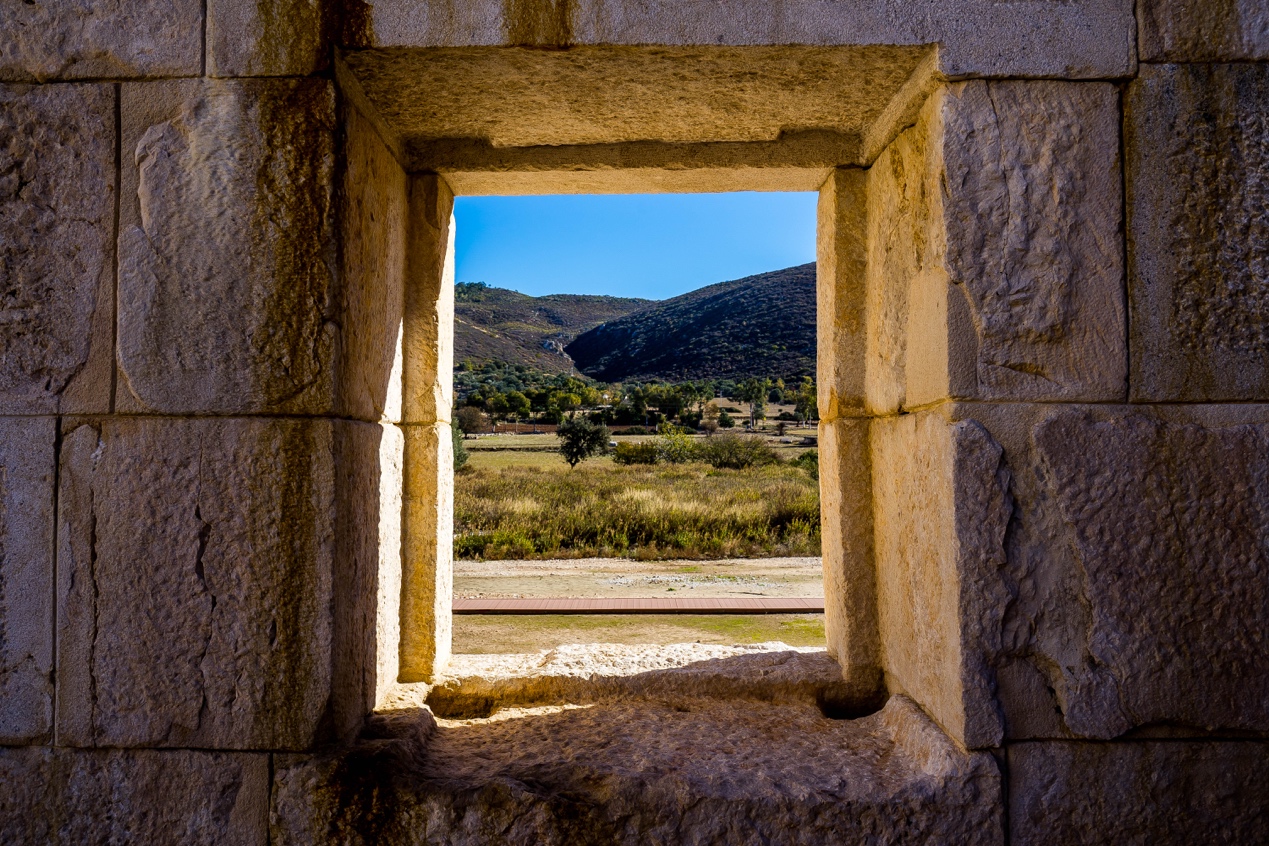
Yet despite the demise of the Lycian civilization, the Lycian lineage did not disappear. Ali, the Turk with the wheat skin, hawkish nose and deep eyes, who was clearly closer to a Mediterranean than a Turk – may have been the very descendant of the Lycians.
Perhaps, even though the country has long since changed and the people’s beliefs are not what they used to be, civilization continues in its own unique way.

